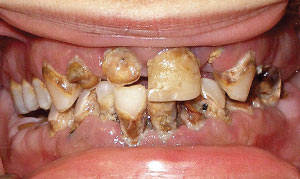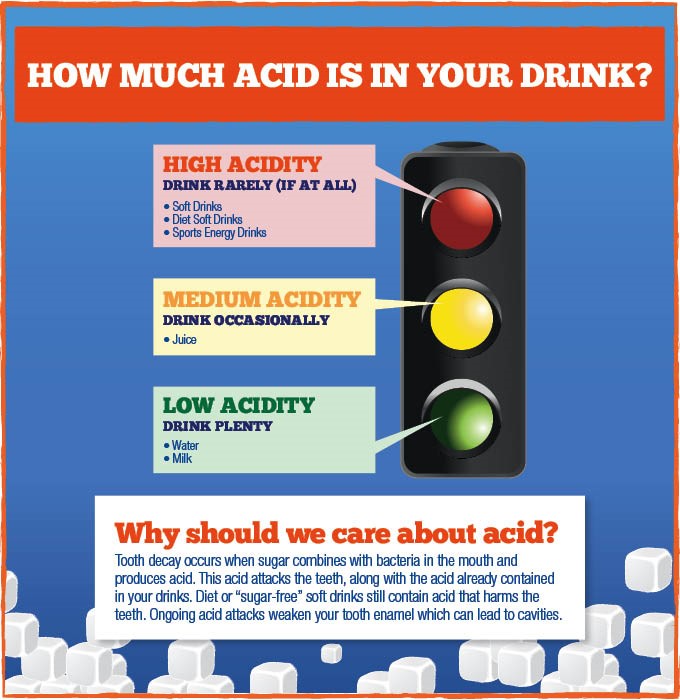Do you sip on sugar sweetened drinks throughout your day? Do you snack on foods with added sugar throughout your day? If this is you, beware! These habits can lead to tooth decay.
Refined sugar is added to many foods and drinks. The worst liquid offenders are soda, sports drinks, sweet ice tea, and fruit juice. The problem is when you sip on these types of drinks throughout your day, your teeth are constantly bathed in refined sugar. Over time, the sugar in these drinks reacts with the plaque bacteria that is always present in your mouth. The by-product of this reaction is an acid that is strong enough to eat through your tooth enamel. Within 20 minutes after you eat or drink something with refined sugar, the acid production process has begun. Soda also contains phosphoric acid. If you frequently drink soda (even diet soda), the phosphoric acid can cause erosion to your tooth enamel; this makes your tooth enamel weaker and increases your chances of developing tooth decay.
One can of regular Coke has over 9 teaspoons of sugar. A 12-oz. can of Mountain Dew contains 11 teaspoons of sugar. A person who drinks two cans per day consumes more than 1.5 pounds of sugar per week from Mountain Dew alone. www.floridahealth.gov/chdcollier/Documents/.../sipalldaypresentation.pdf
Eating foods high in refined sugar can also lead to tooth decay. If you eat sugary foods during the day, you can help minimize the harmful effects of the sugar on your teeth by rinsing your mouth with water, or brushing your teeth after you eat the sweet treat.
It is important for your dental health to avoid drinking beverages throughout your day that are high in refined sugar and acidic and avoid eating frequent sugary snacks. The best defense against sugar and acids is thorough brushing and just as important....cleaning between your teeth. Often, tooth decay begins in between teeth where your toothbrush cannot reach. If you don't regularly floss, the acid produced by the combination of bacteria and sugar sticks between your teeth and causes cavities to form.
Fluoride is also very beneficial in combating the effects of acid on your teeth. Fluoride actually promotes re-mineralization of your tooth enamel making it more resistant to the destructive acid produced by sugar or consumed in soda. Fluoride is in most toothpaste, you can even buy mouth rinse with fluoride, or your dentist can prescribe a prescription strength fluoride toothpaste.
 | |
| Mouth of a diet soda abuser |
(photo courtesy of The Academy of Dentistry)
 |
| Australian Dental Association |

 grow much much slower above and below the gums. Each EvoraPro tablet contains the ProBiora3 healthy bacteria strains. The patient dissolves one EvoraPro mint in the mouth per day.
grow much much slower above and below the gums. Each EvoraPro tablet contains the ProBiora3 healthy bacteria strains. The patient dissolves one EvoraPro mint in the mouth per day.